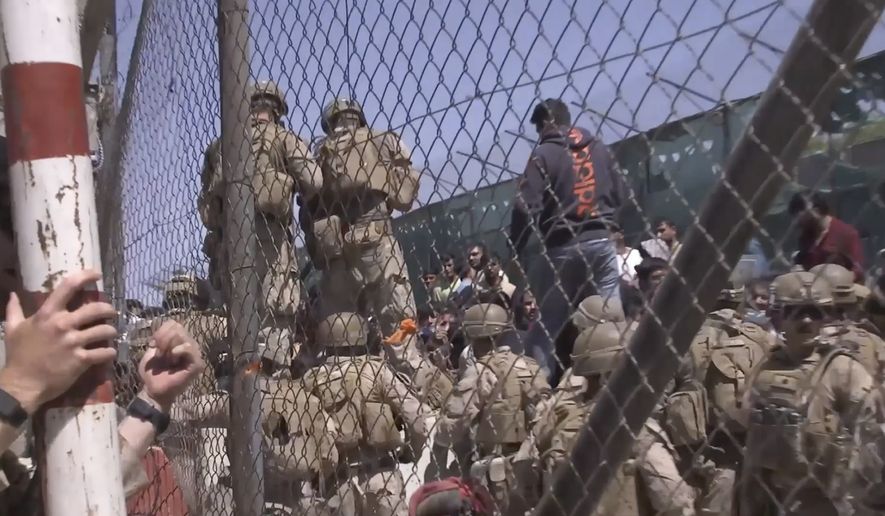The pullout of American forces begun by President Trump and accelerated under President Biden was the “single most important factor” in the rapid collapse of the U.S.-backed government in Afghanistan and the takeover of the country by the radical Islamist Taliban government last summer, according to a new report by the chief U.S. watchdog over the failed 20-year American mission in Kabul.
The forces of the government of Afghan President Ashraf Ghani crumbled within months after Mr. Biden set a Sept. 11, 2021, date for the full removal of U.S. troops, culminating in a chaotic and bloody final departure for the last American soldiers in late August even as the Taliban were taking control of the capital.
U.S. analysts said they were surprised by the quick collapse of the Afghan army, but the interim report from the office of the Special Inspector General for Afghanistan Reconstruction (SIGAR) said the American declaration to leave in early 2020 after two decades of fighting undermined the Afghans’ will to fight.
“Many Afghans thought the U.S.-Taliban agreement was an act of bad faith and a signal that the U.S. was handing over Afghanistan to the enemy as it rushed to exit the country,” the SIGAR report said. “Its immediate effect was a dramatic loss in [Afghan troops’] morale.”
Equally debilitating for Afghan forces was the simultaneous departure in 2021 of private American contractors used by the Pentagon and the Afghan government to work with local forces, effectively grounding the Afghan air force.
“We built that army to run on contractor support,” the SIGAR report quoted one former U.S. commander as saying. “Without it, it can’t function. When the contractors pulled out, it was like we pulled all the sticks out of the Jenga pile and expected it to stay up.”
Mr. Trump and Mr. Biden were both deeply skeptical of the long-term viability of the U.S. military mission in Afghanistan, where the Taliban insurgency still controlled much of the countryside after years of fighting and some $90 billion in American investment in the Afghan military. The Trump administration in February 2021 struck a deal with the Taliban leadership in Doha, Qatar, to pull out American forces by May 2021 in exchange for a cessation of attacks and promises of talks with the Ghani government.
Pentagon leaders opposed an abrupt pullout, but Mr. Biden would only agree to delay the pullout deadline from May to September, setting off what SIGAR auditors said was a spiral of retreat and defeat for the Kabul government. The promised peace talks with the Taliban never came close to producing a workable compromise agreement.
Some of Mr. Trump’s aides have contended that the Biden administration ignored many of the conditions placed on the Taliban in the original agreement and that Mr. Trump would not have agreed to a full pullout on the same schedule had he been re-elected.
The unanticipated total collapse of the Afghan army has sparked questions on Capitol Hill about the quality of the Biden administration’s intelligence analysis and has also produced a sharp decline in Mr. Biden’s own popularity ratings, a decline from which he has yet to recover fully.
SIGAR head John Sopko has earned a reputation as a fierce critic of the American military and reconstruction efforts in Afghanistan, often angering Pentagon leaders with his caustic and pessimistic assessments.
The SIGAR report issued this week said that, in the end, neither Washington nor Kabul was willing to provide what was needed to win the war.
The U.S. and Afghan government “lacked the political will to dedicate the time and resources to reconstruct an entire security sector in a war-torn and impoverished country. [Neither government] appeared to have the political commitment to doing what it would take to address the challenges.”
• David R. Sands can be reached at dsands@washingtontimes.com.




Please read our comment policy before commenting.